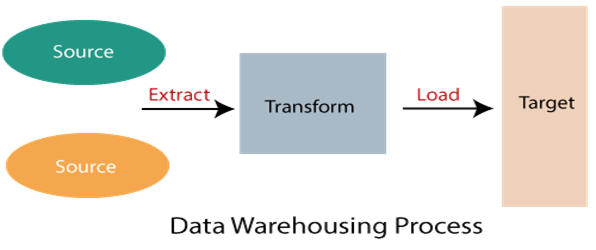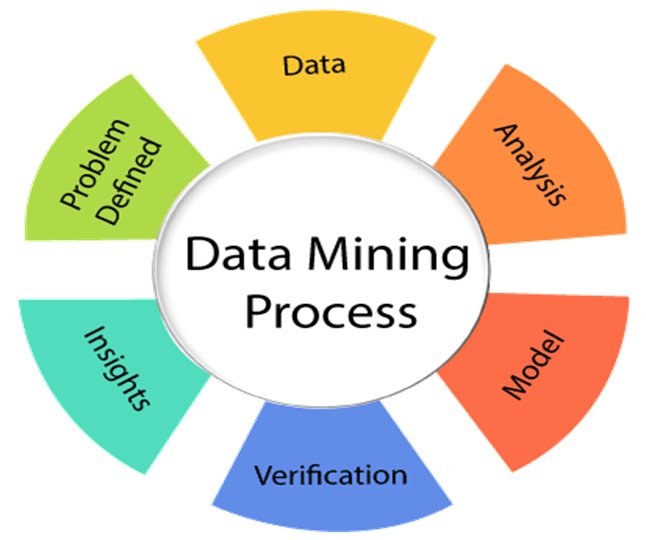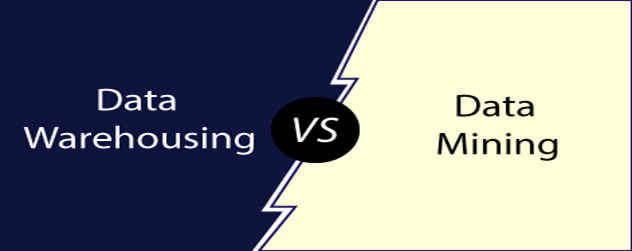Data Mining Vs Data Warehousing
Data warehouse refers to the process of compiling and organizing data into one common database, whereas data mining refers to the process of extracting useful data from the databases. The data mining process depends on the data compiled in the data warehousing phase to recognize meaningful patterns. A data warehousing is created to support management systems.
Data Warehouse:
A Data Warehouse refers to a place where data can be stored for useful mining. It is like a quick computer system with exceptionally huge data storage capacity. Data from the various organization’s systems are copied to the Warehouse, where it can be fetched and conformed to delete errors. Here, advanced requests can be made against the warehouse storage of data.

Data warehouse combines data from numerous sources which ensure the data quality, accuracy, and consistency. Data warehouse boosts system execution by separating analytics processing from transnational databases. Data flows into a data warehouse from different databases. A data warehouse works by sorting out data into a pattern that depicts the format and types of data. Query tools examine the data tables using patterns.
Data warehouses and databases both are relative data systems, but both are made to serve different purposes. A data warehouse is built to store a huge amount of historical data and empowers fast requests over all the data, typically using Online Analytical Processing (OLAP). A database is made to store current transactions and allow quick access to specific transactions for ongoing business processes, commonly known as Online Transaction Processing (OLTP).
Important Features of Data Warehouse
The Important features of Data Warehouse are given below:
1. Subject Oriented
A data warehouse is subject-oriented. It provides useful data about a subject instead of the company’s ongoing operations, and these subjects can be customers, suppliers, marketing, product, promotion, etc. A data warehouse usually focuses on modeling and analysis of data that helps the business organization to make data-driven decisions.
2. Time-Variant:
The different data present in the data warehouse provides information for a specific period.
3. Integrated
A data warehouse is built by joining data from heterogeneous sources, such as social databases, level documents, etc.
4. Non- Volatile
It means, once data entered into the warehouse cannot be change.
Advantages of Data Warehouse:
- More accurate data access
- Improved productivity and performance
- Cost-efficient
- Consistent and quality data
Data Mining:
Data mining refers to the analysis of data. It is the computer-supported process of analyzing huge sets of data that have either been compiled by computer systems or have been downloaded into the computer. In the data mining process, the computer analyzes the data and extract useful information from it. It looks for hidden patterns within the data set and try to predict future behavior. Data mining is primarily used to discover and indicate relationships among the data sets.

Data mining aims to enable business organizations to view business behaviors, trends relationships that allow the business to make data-driven decisions. It is also known as knowledge Discover in Database (KDD). Data mining tools utilize AI, statistics, databases, and machine learning systems to discover the relationship between the data. Data mining tools can support business-related questions that traditionally time-consuming to resolve any issue.
Important features of Data Mining:
The important features of Data Mining are given below:
- It utilizes the Automated discovery of patterns.
- It predicts the expected results.
- It focuses on large data sets and databases
- It creates actionable information.
Advantages of Data Mining:
i. Market Analysis:
Data Mining can predict the market that helps the business to make the decision. For example, it predicts who is keen to purchase what type of products.
ii. Fraud detection:
Data Mining methods can help to find which cellular phone calls, insurance claims, credit, or debit card purchases are going to be fraudulent.
iii. Financial Market Analysis:
Data Mining techniques are widely used to help Model Financial Market
iv. Trend Analysis:
Analyzing the current existing trend in the marketplace is a strategic benefit because it helps in cost reduction and manufacturing process as per market demand.
Differences between Data Mining and Data Warehousing:

| Data Mining | Data Warehousing |
|---|---|
| Data mining is the process of determining data patterns. | A data warehouse is a database system designed for analytics. |
| Data mining is generally considered as the process of extracting useful data from a large set of data. | Data warehousing is the process of combining all the relevant data. |
| Business entrepreneurs carry data mining with the help of engineers. | Data warehousing is entirely carried out by the engineers. |
| In data mining, data is analyzed repeatedly. | In data warehousing, data is stored periodically. |
| Data mining uses pattern recognition techniques to identify patterns. | Data warehousing is the process of extracting and storing data that allow easier reporting. |
| One of the most amazing data mining technique is the detection and identification of the unwanted errors that occur in the system. | One of the advantages of the data warehouse is its ability to update frequently. That is the reason why it is ideal for business entrepreneurs who want up to date with the latest stuff. |
| The data mining techniques are cost-efficient as compared to other statistical data applications. | The responsibility of the data warehouse is to simplify every type of business data. |
| The data mining techniques are not 100 percent accurate. It may lead to serious consequences in a certain condition. | In the data warehouse, there is a high possibility that the data required for analysis by the company may not be integrated into the warehouse. It can simply lead to loss of data. |
| Companies can benefit from this analytical tool by equipping suitable and accessible knowledge-based data. | Data warehouse stores a huge amount of historical data that helps users to analyze different periods and trends to make future predictions. |
